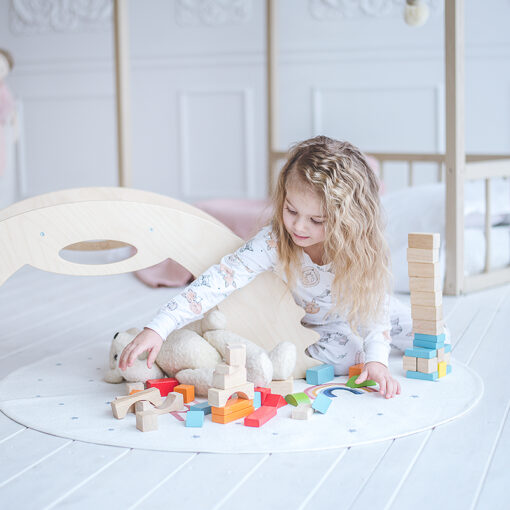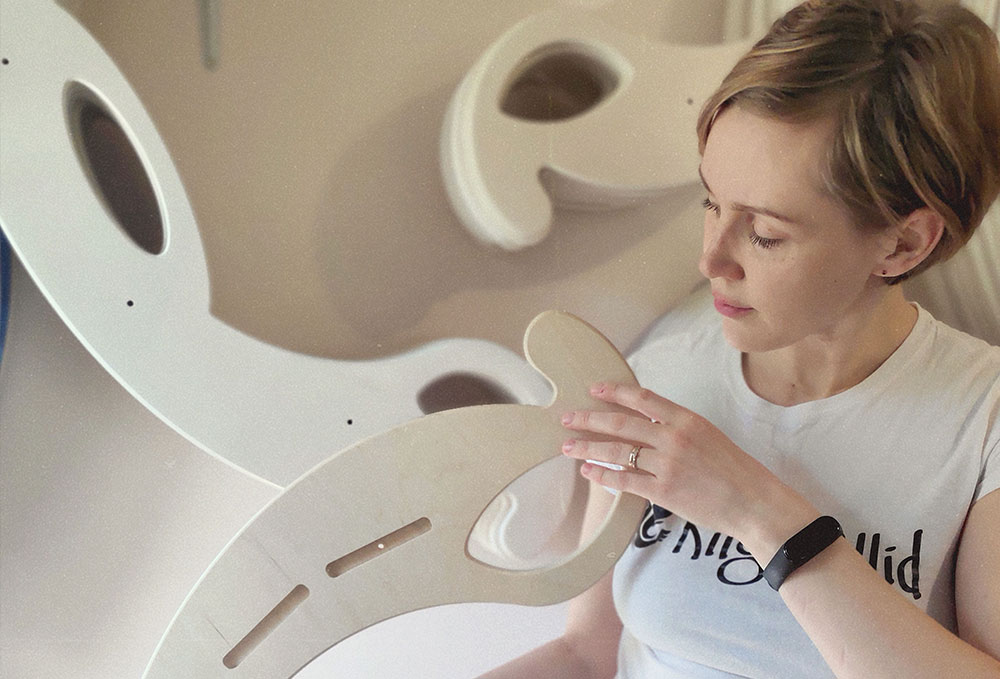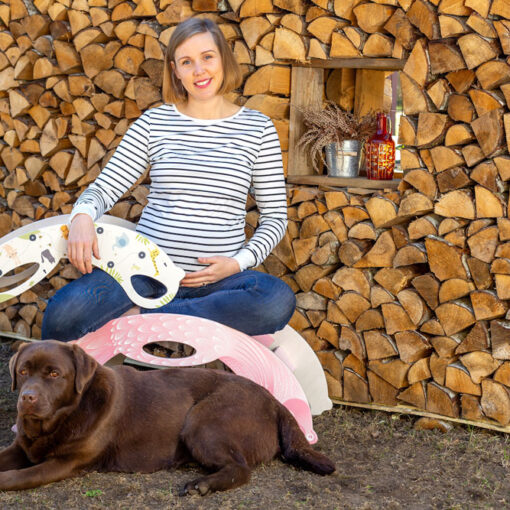We can find all sorts of toys at stores that carry a label “developing toy”. But how would you know which ones are actually beneficial for the child? Nobsi collaborates with a physiotherapist Signe Valgemäe (rühikliink.ee), who helped to explain the background of the rocking toys and clarified how the rocking could contribute towards child’s development.
Briefly about the benefits of rocking
- Supports the physical, social and cognitive development of the child
- Improves body awareness, coordination, spatial awareness and posture
- The unique design of Nobsi wooden rocking toys will give a push towards developing a child’s fantasy and creativity
- Babies and children sleep better if they swing regularly
- When buying a developing toy, make sure that the child could use both sides of their body symmetrically
What should the parent look out for when buying a educational toy?
If you are looking for a toy that primarily develops the child physically, then you should mostly look out for making sure that it is age appropriate and safe. Make sure that the child has a chance to use both sides of their body symmetrically in order to ensure that the child’s body would develop in balance.Inappropriate playful tools are for example Bumbo seat, walking chairs, jumping bouncers. These are used excessively and at an incorrect development phase.
How does the floor rocking toy develop my child?
Rocking is a great activity to support the child’s physical, social and cognitive development. Rocking chairs are even used as therapeutic tools. Rocking develops child’s sensomotility, fine motility and cognitive development. Rocking primarily supports the physical development and strengthening muscles. Back-and-forth and sideways back-and-forth movement on the rocking toy stimulates the cortical functions in the brain. Mostly, the vestibular system (balancing organ in the middle ear) and the proprioception (sensory receptors for body coordination) are engaged.Effect on muscles:
- Moving feet back and forth and leaning the body back and forth in order to move the rocking toy activates the entire body
- Rocking particularly develops balancing, muscle strength of hands, hips, knees and core body
- Besides sensomotility, the rocking also develops fine motility skills such as collaboration of fingers and hands when grasping
- Improves body awareness, coordination, spatial awareness and posture
How important is physical movement through play for children?
Child’s job is playing. Movement through playing develops physical and mental skills and also keeps the child happy. Climbing, jumping, running, crawling – these activities make children physically stronger, less receptive to illnesses and physically more skilled. It also reduces the risk of obesity. Games and movement activity change according to the age. Exciting buildings, swings, slides etc at playgrounds add challenges and excitement to games. They also develop fantasy and creativity. Playing through physical movement is the best cure for modern technology addiction! By joining children with playing, the parents are able to teach new skills and increase their child’s activity levels. It also guarantees a quality time with their own family.Are the posture and body composure of small children fixed already at an early age or would it develop later when sitting on a school chair?
Posture development will mostly fall in the pre-school period. As the posture has age-specific features, the requests for adult posture are not applicable to children. The curvature of the vertebral column is not stable in first years of life. Until the age five, children lack habitual posture as their body composure changes constantly through growing up.
The posture of boys and girls is also different – by the age of six or seven, the spine has more or less taken the shape similar to an adult. Children don’t keep their head completely up until the age of seven or eight, the shoulder blades are not completely against the wall until the age of ten. The stomach contour changes constantly as the child grows up – small toddlers usually have potbellies which will disappear over time.
Significant change will take place between the age 10-12 when the waist area will become significantly thinner and abdominal muscles become tighter. The stomach is flat and is not over the chest area. 10-12-year-old children have labile posture, whereas between the age 12-16, the posture stabilises. Kyphosis and lordosis edges are finally fixed when the growth stops and half of the height has been reached.
Skeleton will develop for another 2 years and bones will densify. Therefore, the posture will be fixed by the age 20-22. In order to maintain the correct posture until old age, the degenerative changes should be kept under control and the premature ageing of the back should be avoided.
Sources:
- Lapse rühi kujundamine. Tervise Arengu Instituut.
- Hermlin, K. Kehahoiu ABC. Tartu Ülikooli Kirjastus, 2001.
- Sheridan, M. D. From Birth to Five Years. Children developmental progress. NFER-NELSON Publishing Company Ltd, 1988.
- Playgroundequipment.com
- Teadlikvanem.ee

















